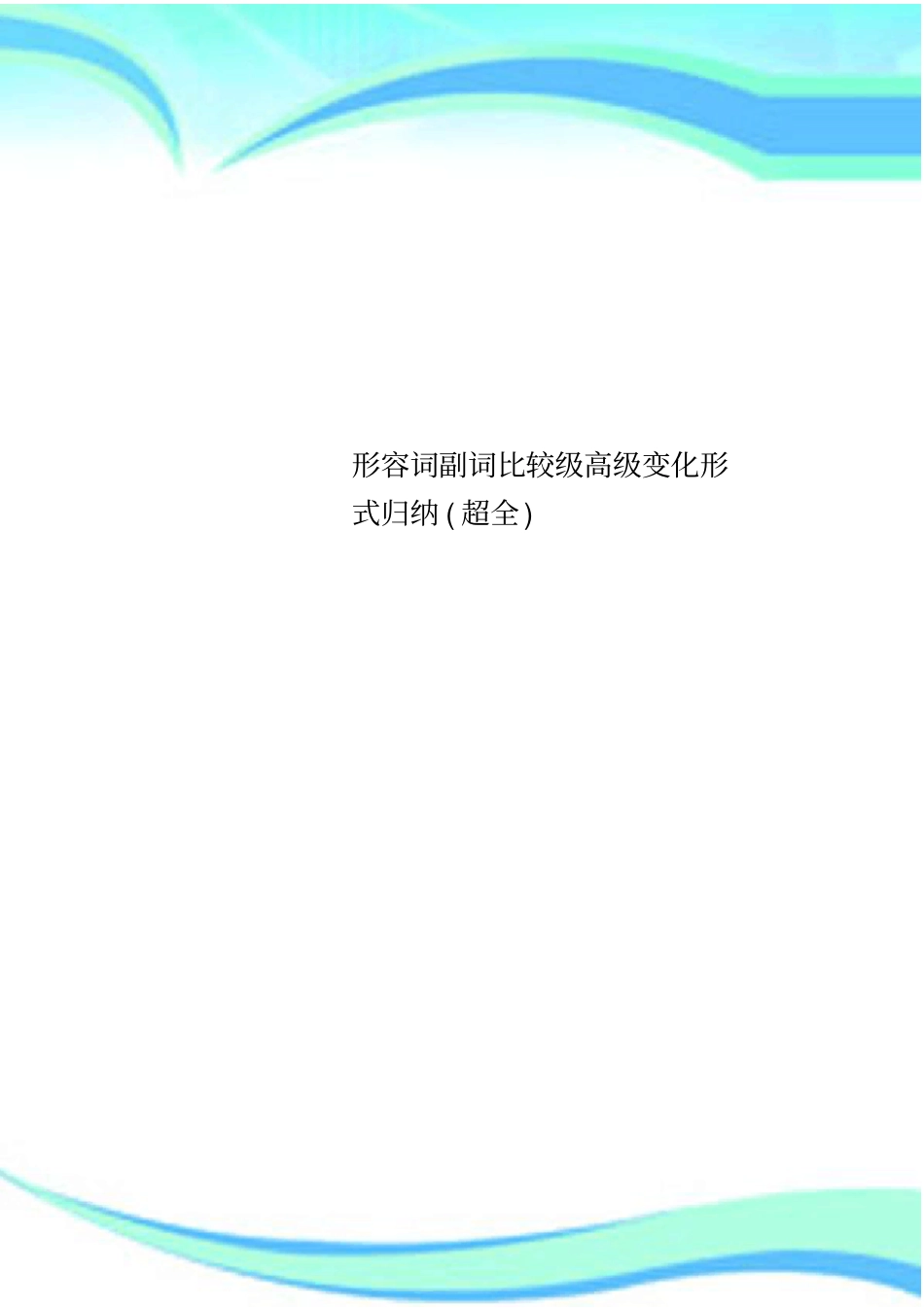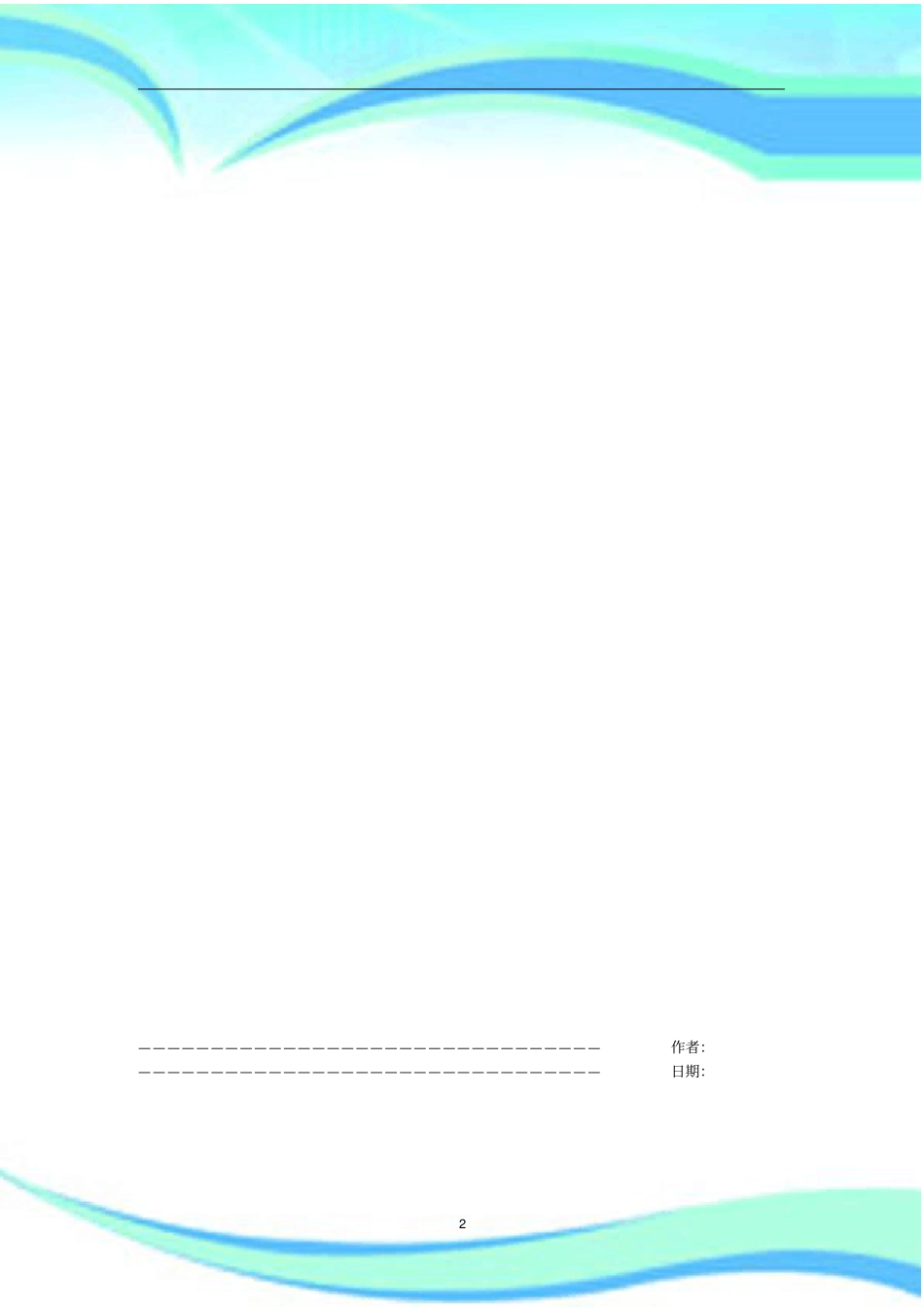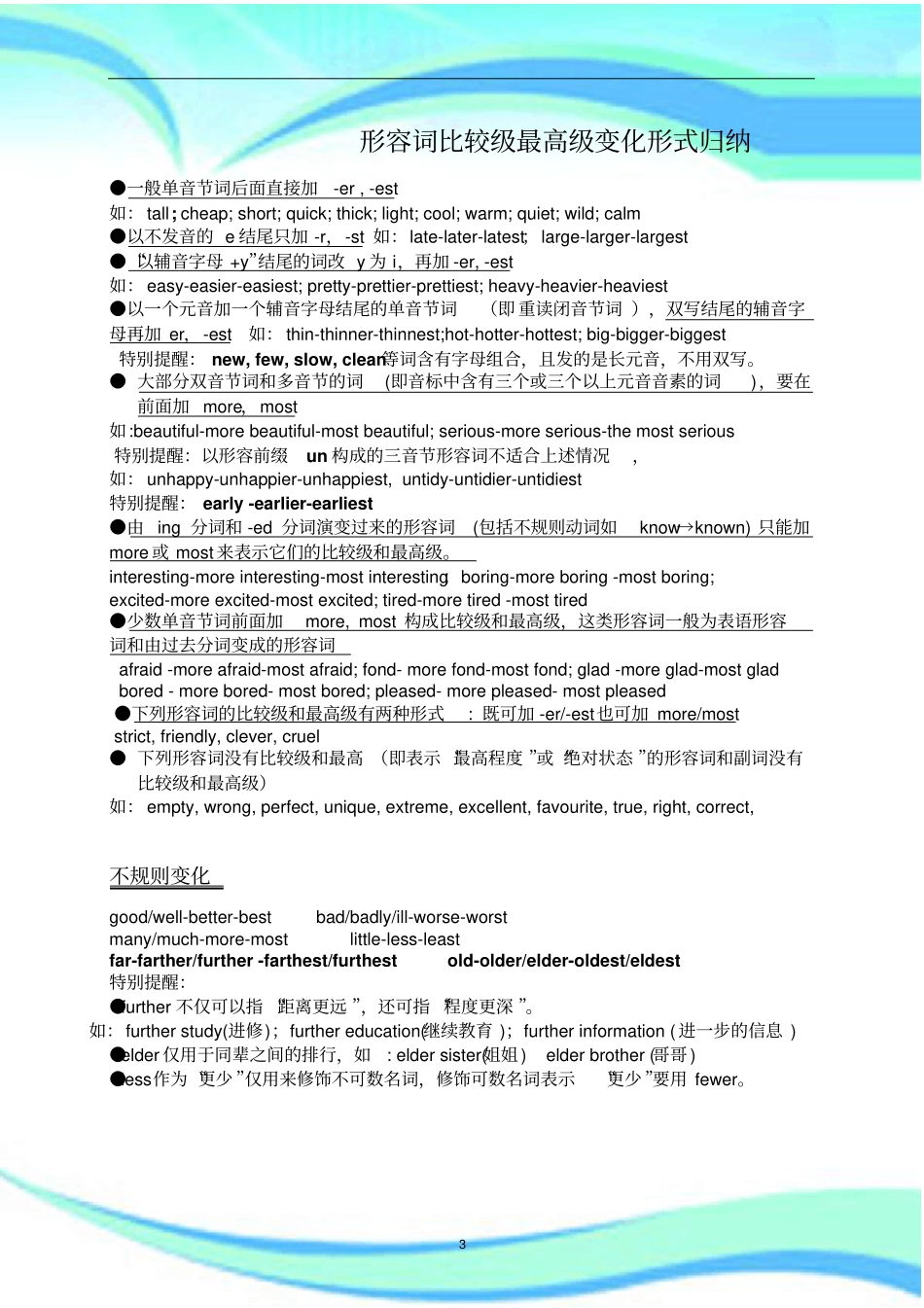形容词副词比较级高级变化形式归纳 ( 超全 ) 2 ————————————————————————————————作者:————————————————————————————————日期:3 形容词比较级最高级变化形式归纳●一般单音节词后面直接加-er , -est 如: tall; cheap; short; quick; thick; light; cool; warm; quiet; wild; calm ●以不发音的 e 结尾只加 -r,-st 如:late-later-latest;large-larger-largest ●“以辅音字母 +y”结尾的词改 y 为 i,再加 -er, -est 如: easy-easier-easiest; pretty-prettier-prettiest; heavy-heavier-heaviest ●以一个元音加一个辅音字母结尾的单音节词(即 重读闭音节词 ),双写结尾的辅音字母再加 er,-est 如: thin-thinner-thinnest;hot-hotter-hottest; big-bigger-biggest 特别提醒: new, few, slow, clean等词含有字母组合,且发的是长元音,不用双写。● 大部分双音节词和多音节的词(即音标中含有三个或三个以上元音音素的词),要在前面加 more,most 如:beautiful-more beautiful-most beautiful; serious-more serious-the most serious 特别提醒:以形容前缀un 构成的三音节形容词不适合上述情况,如: unhappy-unhappier-unhappiest, untidy-untidier-untidiest 特别提醒: early -earlier-earliest ●由 ing 分词和 -ed 分词演变过来的形容词(包括不规则动词如know→known) 只能加more 或 most 来表示它们的比较级和最高级。interesting-more interesting-most interesting;boring-more boring -most boring; excited-more excited-most excited; tired-more tired -most tired ●少数单音节词前面加more, most 构成比较级和最高级,这类形容词一般为表语形容词和由过去分词变成的形容词afraid -more afraid-most afraid; fond- more fond-most fond; glad -more glad-most glad bored - more bored- most bored; pleased- more pleased- most pleased ●下列形容词的比较级和最高级有两种形式: 既可加 -er/-est也可加 more/most strict, friendly, clever, cruel ● 下列形容词没有比较级和最高 (即表示 “最高程度 ”或“绝对状态 ”的形容词和副词没有比较级和最高级)如: empty, wrong, perfect, unique, extreme, excel...


